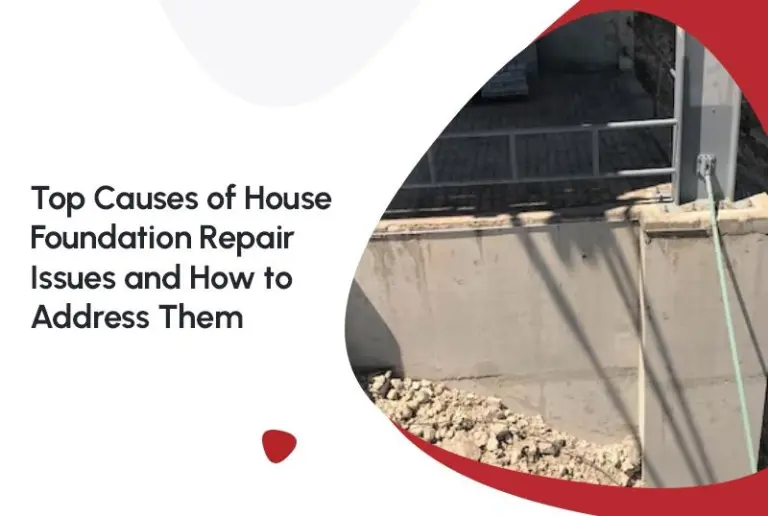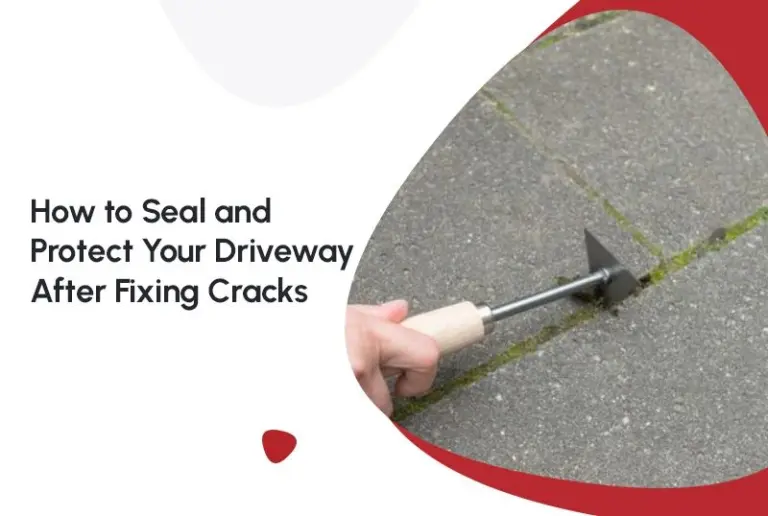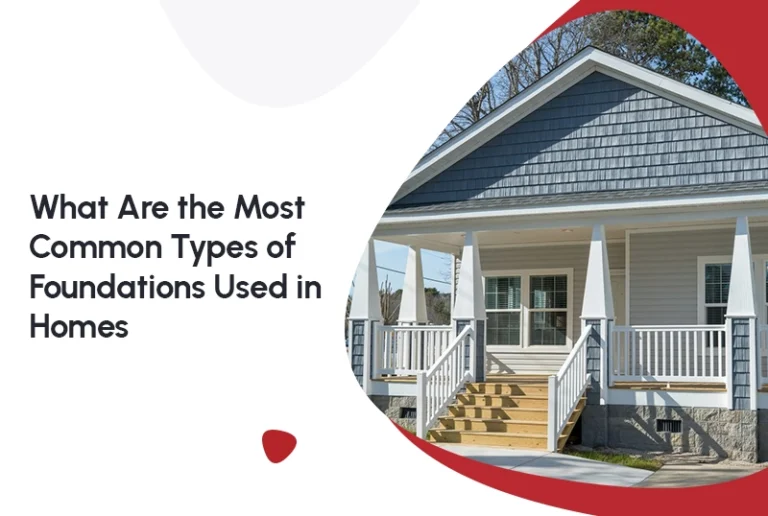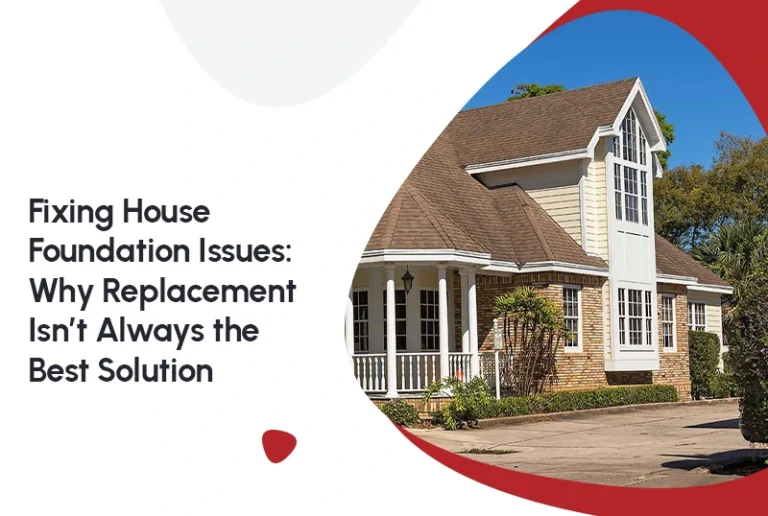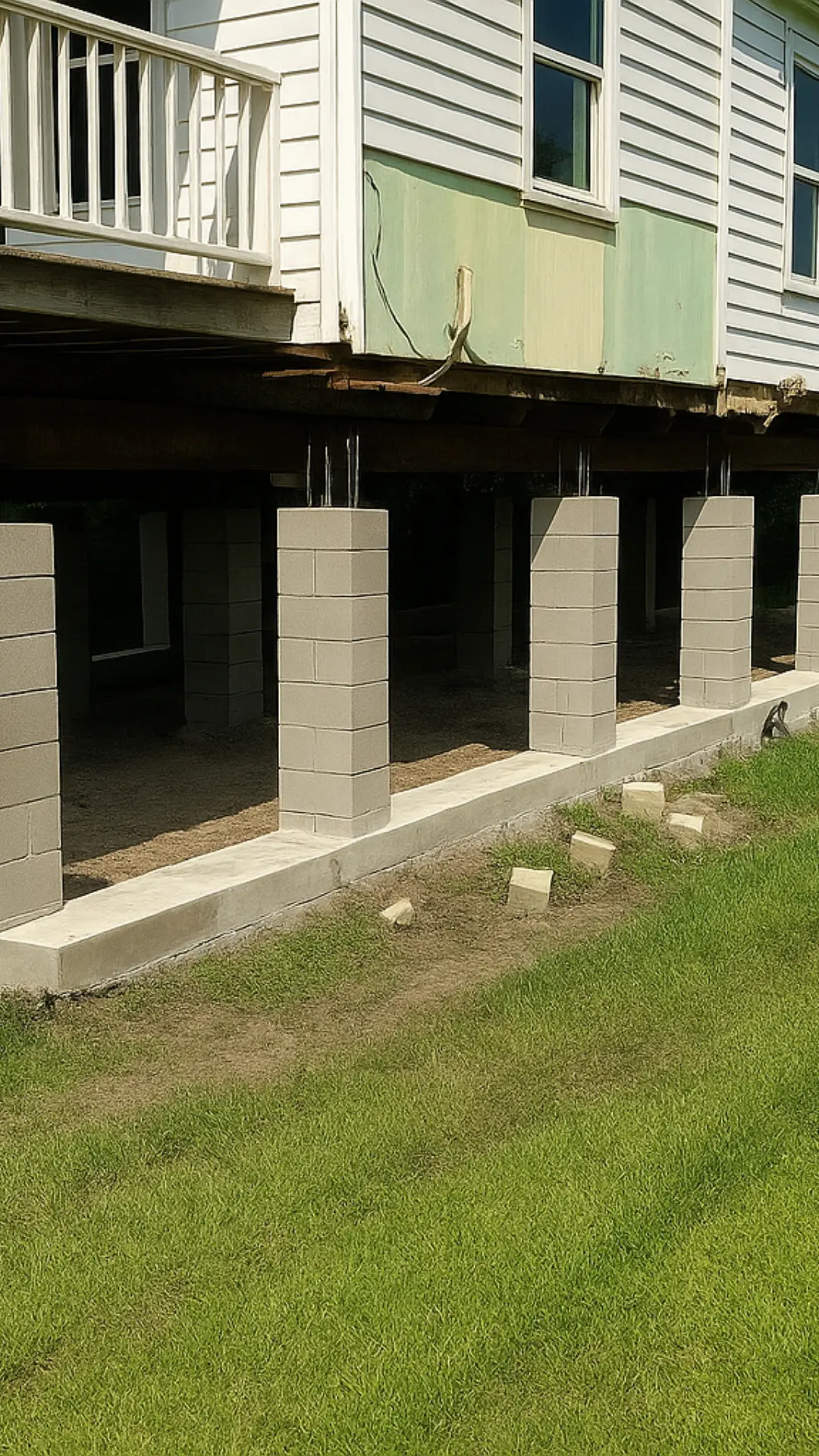Basements are often envisioned as practical extensions of the home, perfect for storage, recreation, or future renovation. Yet for many homeowners, the basement becomes the single most temperamental room in the house. Damp walls, musty smells, discoloration, mold growth, and recurring puddles can turn what should be a functional space into a source of stress. Understanding how water enters a basement, and more importantly, how to stop it from ever returning, is essential to protecting both your property value and your home’s structural integrity.
This is where exterior waterproofing comes in. Unlike interior remedies that treat symptoms after water has already penetrated the home, exterior waterproofing stops the intrusion at the source, the soil surrounding the basement. It’s considered the gold standard for long-term foundation protection, and for good reason.
Basement moisture isn’t a rare event, it’s far more common than most homeowners realize. In fact, according to FEMA, 98% of basements will experience water damage at some point in their lifetime. This highlights why exterior waterproofing isn’t optional, it’s essential.
Let’s take a deep dive into why basements leak, how exterior waterproofing membranes work, and why this approach remains the most effective solution available today.
Want to know more about exterior foundation waterproofing? Click here.
Why Basements Leak: The Unavoidable Realities of Subsurface Construction
Basements are built below grade (below soil level), making them inherently vulnerable to moisture. The environmental forces acting on a basement wall are continuous, heavy, and complicated.
Below are the most common causes of moisture infiltration in basements and why they’re so difficult to avoid.
Hydrostatic Pressure: The Silent Destroyer
Hydrostatic pressure is one of the most significant forces acting on a basement. When soil becomes saturated after rainfall, irrigation, storms, or seasonal melting, it becomes heavier and expands. This extra weight places enormous pressure against basement walls.
Moisture-rich regions like Texas see significantly higher foundation stress. The U.S. Census Bureau even reports that 22% of homes in moisture-prone areas experience basement water intrusion every single year. Exterior waterproofing helps homeowners avoid becoming part of this
Given enough time, hydrostatic pressure forces water into the basement via:
- Invisible pores within concrete
- Weak spots in the structure
- Mortar lines
- Expansion joints
- Hairline cracks
Even a perfectly constructed basement can eventually give way to hydrostatic pressure. It is persistent and grows worse with poor drainage or improper grading.
The Impact of Expansive Soil on Basement Stability
Soil composition plays a critical role in basement performance. Homes across the Gulf Coast including areas like Houston, Humble, and Fresno are built on clay-dominant soils that dramatically change volume depending on moisture.
Clay soil expands significantly when wet and shrinks just as dramatically when dry. This continuous swelling and shrinking creates a jackhammer-like effect on the foundation:
- When the soil expands, it pushes inward on the walls
- When it contracts, it pulls away, removing crucial support
This movement breaks sealants, widens cracks, and generates opportunities for water intrusion. It’s the same mechanism that often leads homeowners to require foundation repair Humble, house leveling Humble, or pier and beam foundation repair Humble.
Poor Drainage Conditions Around the Home
Even the best-built basement cannot withstand surface water that pools around the foundation. Homes with improper gutter systems, short downspouts, flat grading, or heavy landscaping often experience excessive water accumulation near basement walls.
Over time, pooled water saturates the soil until it begins pressing inward on the basement. This is why proper grading and exterior waterproofing work in tandem — one redirects water while the other repels it.
Existing Cracks and Structural Weaknesses
Concrete is strong, but it is not immune to natural stress. Seasonal temperature swings, soil movement, settling, and structural loads all cause concrete to crack over time. Even narrow cracks act like open invitations for moisture.
When water enters through cracks and freezes, it expands inside the wall, widening the crack further and accelerating deterioration.
Exterior waterproofing membranes are uniquely designed to address this issue by stretching with the foundation, sealing cracks before they become major leaks.
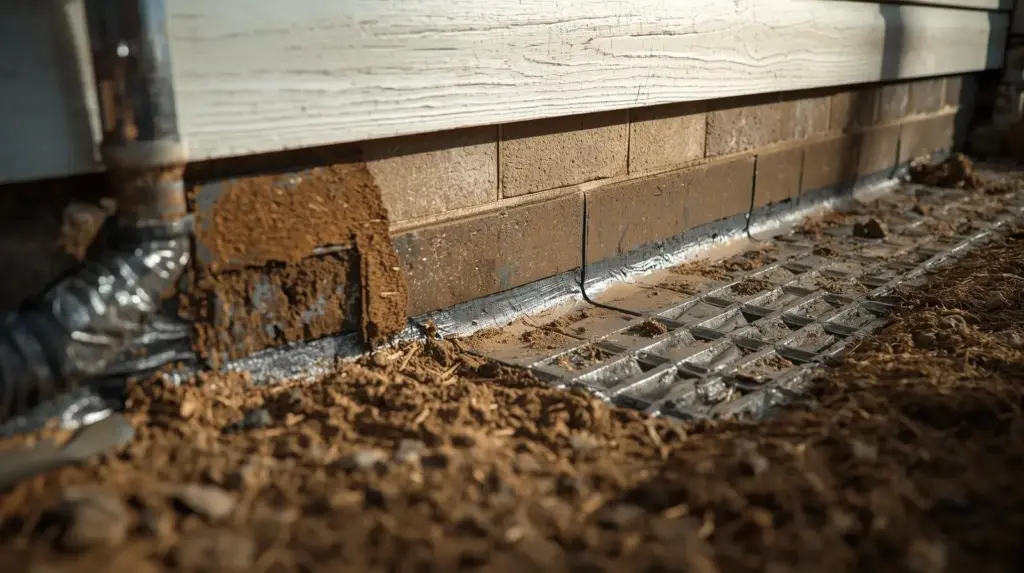
What Exterior Waterproofing Really Means
Exterior waterproofing is a multi-layered system designed to protect the basement from outside forces rather than reacting to water once it has infiltrated. It requires excavation, structural repair, membrane installation, and drainage solutions.
When installed properly, exterior waterproofing:
- Prevents water contact with concrete
- Eliminates hydrostatic pressure
- Reduces the risk of mold and mildew
- Increases the lifespan of the foundation
- Keeps the basement dry for decades
Rather than managing moisture inside, it creates a defensive shield around the home.
A Detailed Breakdown: How Exterior Waterproofing Membranes Work
Exterior waterproofing is a well-engineered process. Each stage contributes to the long-term success of the system.
Excavation: Accessing the Foundation
The process begins with digging around the entire perimeter of the foundation until the bottom of the basement wall and footing are fully exposed. This is a significant process requiring heavy equipment, as soil must be carefully removed to allow workers safe and complete access to the basement walls.
Excavation helps in multiple ways:
- It removes compacted soil that pushes against the foundation
- It exposes hidden cracks and vulnerable areas
- It allows contractors to observe existing moisture pathways
It also reveals the shape, condition, and construction quality of the foundation wall, enabling contractors to customize the waterproofing solution accurately.
Cleaning and Repairing the Wall Surface
After excavation, the wall is thoroughly cleaned often using pressure washing or specialty cleaning solutions. Removing dirt, mold, loose concrete, and old sealants ensures that the membrane will bond completely.
Once exposed and clean, contractors repair any structural issues. Small cracks are filled with hydraulic cement, while more significant cracks may be injected with epoxy. Mortar joints are repaired, and uneven surfaces are smoothed.
This pre-treatment is essential because the membrane can only be as effective as the surface it adheres to.
Applying the Waterproof Membrane: The Core of the System
The membrane is what truly makes exterior waterproofing so effective. Depending on the home’s structure, contractors choose between:
- Rubberized asphalt coatings
- Polyurethane membranes
- Thick elastomeric coatings
- Multi-layer peel-and-stick sheets
These membranes form a flexible, seamless barrier over the entire foundation wall. Unlike rigid sealants, they can stretch with the foundation as it naturally shifts. This prevents future cracks from reopening vulnerable spots.
Membranes are engineered to repel water completely. Even if the soil becomes fully saturated, the membrane prevents moisture from penetrating the basement wall.
Installation of Drainage Panels
After the membrane sets, drainage panels are installed. These panels usually made of high-density polyethylene (HDPE) create a drainage gap between the soil and the foundation wall.
They serve three purposes:
- Protect the membrane from soil abrasion
- Channel water downward toward the drainage system
- Reduce the lateral pressure exerted by wet soil
Drainage panels effectively become the “first contact layer” between soil and the waterproofing system.
Installation of the French Drain (Footing Drain)
At the bottom of the wall, contractors install a perforated drainpipe (often called a French drain). This pipe collects groundwater and transports it away from the home. It is surrounded by gravel and wrapped in filter fabric to prevent soil clogging.
This drainage system dramatically reduces the chance of water building up around the foundation. Without this step, even a waterproof membrane would struggle against extreme hydrostatic pressure.
Homes that have already shifted or settled may require additional repairs such as house leveling service Humble or foundation repair Humble before drainage installation, ensuring the waterproofing process is structurally supported.
Backfilling with Proper Grading
Once the waterproofing layers and drainage system are in place, the trench is carefully backfilled. Contractors might use gravel, clay, or soil mixes depending on the property’s needs. The final step involves shaping the ground so it slopes away from the foundation, a crucial feature that ensures rainwater naturally flows outward instead of pooling around the home.
Why Exterior Waterproofing Outperforms Interior Methods
Interior waterproofing serves an important purpose, especially for moisture management inside a basement. However, it does not prevent water from contacting the foundation. It merely controls the moisture after it enters.
Exterior waterproofing offers benefits that interior systems simply cannot match:
- It stops water before it reaches the structure
- It protects against hydrostatic pressure
- It prevents mold from forming in the first place
- It addresses cracks instead of hiding them
- It increases the structural life of the home
- It boosts property resale value
Once water penetrates basement walls, the clock begins ticking. The Environmental Protection Agency warns that mold can begin growing in as little as 24–48 hours on damp materials. This makes timely exterior waterproofing crucial for both structural and health protection.
Conclusion
Exterior waterproofing is the most powerful method to protect your basement from water damage. By combining excavation, structural repair, membrane installation, and advanced drainage, it creates a comprehensive shield around your foundation.
In water-prone or clay-heavy regions, pairing waterproofing with additional services such as house leveling Humble, pier and beam foundation repair Humble, or foundation repair Humble provides unmatched long-term protection.
A dry basement isn’t luck. It’s engineered.
FAQs About Exterior Waterproofing
How to waterproof an exterior?
Waterproofing an exterior involves creating a moisture barrier around the outside of the foundation or walls. This typically includes excavating the soil around the foundation, applying a waterproof membrane, installing drainage systems such as French drains, sealing cracks, and ensuring the soil around the home slopes away to divert water. Professional systems may also include moisture-proof coatings, drainage boards, or protective insulation layers.
Can you do waterproofing yourself?
DIY waterproofing is possible for small issues like sealing minor cracks or applying surface coatings, but full exterior waterproofing is not recommended for homeowners. It requires excavation, proper drainage installation, and specialized materials that ensure long-term protection. Incorrect installation can trap moisture and worsen structural issues. For major waterproofing, professional service is strongly advised.
How to seal outside of house from water?
Sealing the outside of a house involves closing gaps where water can enter—this includes sealing foundation cracks, applying exterior wall coatings, correcting grading to direct water away, and repairing gutters or downspouts. In cases of persistent moisture, drainage systems (like French drains, downspout extensions, or sump pumps) may be installed to keep water from accumulating near the foundation.
How to waterproof house exterior?
Exterior waterproofing for a home typically involves layering protective systems:
- Excavating around the foundation
- Applying waterproof membranes
- Adding drainage boards or insulation
- Installing French drains or weeping tile systems
- Using sealants to close cracks
- Ensuring slope correction so water flows away
This creates a full waterproof envelope around the home and is the most effective long-term solution for moisture problems.
Is basement waterproofing worth it?
Yes, basement waterproofing is extremely worth it. Water damage can cause structural deterioration, mold growth, foul odors, ruined flooring, and increased foundation repair costs. Waterproofing protects the home’s value, prevents costly damage, and improves indoor air quality. For homes in moisture-prone areas, it can save thousands over time.
How do I waterproof the outside of my house?
To waterproof the outside of a house, professionals typically:
- Dig around the foundation to reach the exterior walls
- Clean and inspect the surface
- Apply a waterproof membrane or liquid rubber coating
- Install drainage systems like French drains
- Backfill with gravel or soil designed for drainage
This approach blocks moisture at the source instead of allowing it to enter the foundation first.
How much does it cost to waterproof the outside of your house?
Exterior waterproofing usually costs $3,000 to $15,000, depending on home size, soil conditions, drainage needs, and severity of water intrusion. Homes requiring deep excavation, extensive drainage replacement, or foundation crack repairs may fall on the higher end. Although the cost seems significant, it is often far less than repairing long-term foundation or basement damage.



